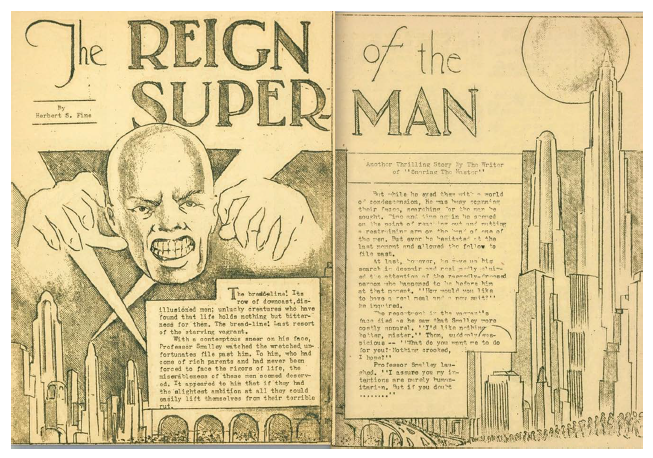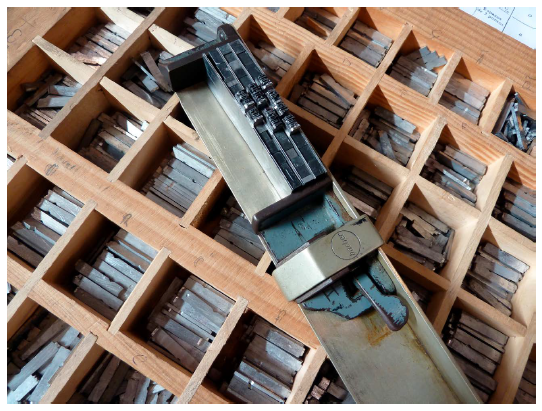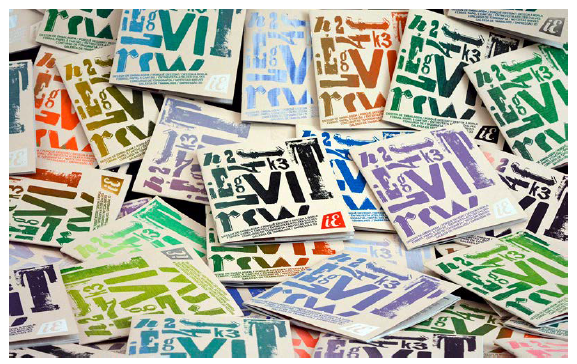1. Independent Publishing
Today the graphic designer presents himself with a different role, detached from the principles presented to us by the history of design, as it often comes up with the role of producer / editor of content and / or solutions. This feature is deeply explored by Lupton [1] or Margolin [2] and was named by Heller [3] like “designer as authorpreneur”, in a junction of the words author and entrepreneur. This event can find its peak when we talk about self-publishing, independent publishing, author editing or fanzines, channels increasingly used by designers, illustrators and photographers to share their work or stating a conviction or orientation towards a particular and restricted set of readers.
The origin of this kind of self-published publications - often produced in a do-it-yourself approach and distributed in underground circuits - may be traced back to the 1920-30s with the appearance of the first fanzines [4]. These publications were basic, handcrafted, low-cost, limited-diffusion, and circuit-restricted objects, often associated with science fiction fans. Only later, in the 1950-60s, this sort of publication reach its peak when they became the main vehicle for the dissemination of the punk and comic scene [5]. However, the production of this type of independent publications does not seem to have ceased in the last decades and, even in Portugal, there is a growing interest in this communication vehicle, which is evident in the number of existing editions, the number of events and exhibitions devoted to this topic, or even to the scientific research that has been devoted to it.

Fig.1 «The Reign of the Superman» a short story from the 1933 zine “Science Fiction: The Advance Guard of Future Civilization”. Source: the author’s archive
As a reflection of today's society, with the emergence of the internet and the easy access to desktop publishing tools, many of these publications also take the form of online editions - complementary or not to a print edition - thus increasing the reach and distribution of these titles to then confined to a very restricted group [6]. These technological transformations will allow the arrival of a new generation of “publishers” who will produce their own content, design and print the publication without the need for great technical knowledge. The growing concepts such as printing-on-demand or web-to-print further enhances the ease of producing self-edited or independent publications without the burden of high printing investment, as it becomes possible to print at a small cost [7].
But, despite this increasingly use of new information technologies in the context of self-publishing, there is also a growing commitment to return to the craft, underground, or do-it-yourself context, mainly associated with publications born in creative circles - where many titles proliferate - with a high aesthetic care visible either in design or in the choice of printing materials and techniques. Bártolo [8] states that this growing “enthusiasm for publishing” is also reflected in the spread of spaces dedicated to the distribution, sale and dissemination of this type of publication, as well as dedicated events and exhibitions.
However, as opposed to the producers of fanzines of the 1920s-30s, “by definition, self-taught amateurs without specific graphic or editorial learning” [6], now the publisher's profile has high level skills of graphic and editorial design. Thus this type of publications become increasingly bold graphically, selective in what materials and reproduction techniques to use, turning them often in hybrid objects or in so-called big books. This evolution occurs because design as a discipline is no longer dependent only on an external customer, but increasingly becomes a self-conscious discipline with its own audience [9].
2. Production in workshop context
As described earlier, the designer integrated into a mainstream universe follows a different path from the designer who puts himself at the center of the creative and productive process of a given project, when stimulated by the desire to create and publish his own content. In this case, motivation may, in many situations, depend on a social or political context. But the familiarity with production spaces, as in the project presented below, can increase the skills to solve problems. The school, as a place of learning but simultaneously as a space for experimental production, will decisively enhance the creativity of the future designer. In laboratories or workshops, it is intended “to show the importance of teaching graphic design in the use of experimentation methods in which students are led to 'get their hands dirty'” [10].
These spaces dedicated to practical exploration have a particular profile when implanted in an academic context. Their users do not have a specific or definitive role and they must be prepared to adapt to the unforeseen during the printing process, but they should also be willing to cooperate and share their experience. “The workshop is an active space, with bridges to other contexts, industrial and traditional, collaborative in essence, with congenital predisposition to the spread, in which we participate. This is the nature of the impression and the workshop, to make an idea multiply and spread through contact.” [11].

Fig.2 Example of the workshop space, equipment and materials available at Polytechnic letterpress lab. Source: the author

Fig.3 Example of the workshop space, equipment and materials available at Polytechnic letterpress lab. Source: the author
This is how designers can most easily become authors and producers, not merely projecting themselves as someone who solves a communication problem, but often as the author of that problem and the producer of a solution. Lupton [1] describes this new professional as a “maker of content and shaper of experiences”, a designer willing to get his hands dirty, face production problems that may occur while undertaking a project, prepared above all to find solutions and provide the final product. The collaborative and experimental character of these spaces in an educational context allows the student to explore their ability to design solutions that meet existing workshop conditions, preparing them for the possibility that the end result might not be the one originally intended. It is thus possible to explore the materiality of the end product as well, sometimes by taking advantage of chance or trial and error approaches, as well as combining the production resources in order to create new solutions to traditional problems.
3. i.E. Magazine #6 case
The act of publishing something is still understood by many publishers as making an idea, opinion or point of view public. “To publish is to put yourself out there, by proclaiming that you have content that is worth sharing with other people. (…) Most publishing ventures, however, are not so much motivated by profit as by the universal human desire to share ideas through permanent, reproducible, exchangeable media.” [12]. It was in this context of willingness to share that in 1998 a group of students came together to create a magazine whose content, design and production could be entirely from their responsibility, using only the tools and resources provided by the printing laboratories of the school.
Thus arose the Magazine i.E., as a vehicle for learning, experimentation and dissemination of what could be produced by students in a workshop context, independently, without having to answer to a teacher or customer. In 1998 and 1999 the numbers 0 and 1 were edited, but the fact that this was a project exclusively produced by the students dictated its non-continuity. However, this experience was not forgotten and the teachers themselves used this publication as an example of good practice. Thus, in 2013 re-emerged a group of students willing to give life to this publication, and to ensure the continuity of the project, now the publication has an editor (teacher) that will bridging the gap between students from different years of the Design Degree as well as Master students. Since then, nine more issues have been edited.
For each number of the magazine the editor usually create a set of technical or financial limitations, which the students should be able to solve. In the specific case of the sixth edition, used in this paper as a model, there was the premise of producing 500 different covers without using digital printing techniques. The students involved understood this limitation as a challenge and set out to explore the techniques of letterpress and silkscreen printing in articulation, in order to solve the problem presented. Using the typographic collection available at our lab - mostly made up of lead and wood letterpress type - different specimens were printed, photographed and then digitally treated to create a typographic composition for the magazine cover. Once this composition was created, it was time to use silkscreen printing in order to simulate a personalization for each cover. This was achieved because at each print was added a different colour, thus ensuring that each time a copy was printed, the ink was mixed differently. Cover printing paper - Fedrigoni Sirio Sabbia E20 290grs - has been selected to simulate the texture of the letterpress print.

Fig.4 Overview of the variety of covers created using silkscreen printing techniques. Source: the author
In addition to the fact that the magazine's production reflect the exploration of different materials, technologies and equipment available in our lab, this project also tries to encourage type design. All typefaces used in the magazine are designed by students or alumni. In the issue five, it was launched in partnership with Adobe, a typeface design competition whose results were published in edition number six.
3. Conclusion
In current graphic production, the do-it-yourself practices have been assuming increasing importance, revealing themselves as privileged spaces of expression and artistic and personal experimentation. Indeed, if this kind of magazines have tended to be known only in restricted media, now there is a growing consumer interest in this kind of self-produced, independent an rudimentary produced.
In the specific case presented - i.E. Magazine # 6 - it was essential to use the laboratories where traditional letterpress or silkscreen printing could be experienced, making the student aware of a much broader reality beyond what they find on the computer, digital tools, or even within a traditional classroom. Having access to more experimental learning methods allows us to amplify the student's creative vision and is able to improve learning processes. The collaborative methodologies used in the context of a workshop are relevant in graphic design and editorial practices, placing the designer also as author, collaborator and producer, able to dictate content and practical solutions of high value. The improvement of the creative processes and the tools used, makes the designer as author, a more informed and conscious professional, allowing the approach to the technologies and contributing to their recognition and applicability in a professional context.

















